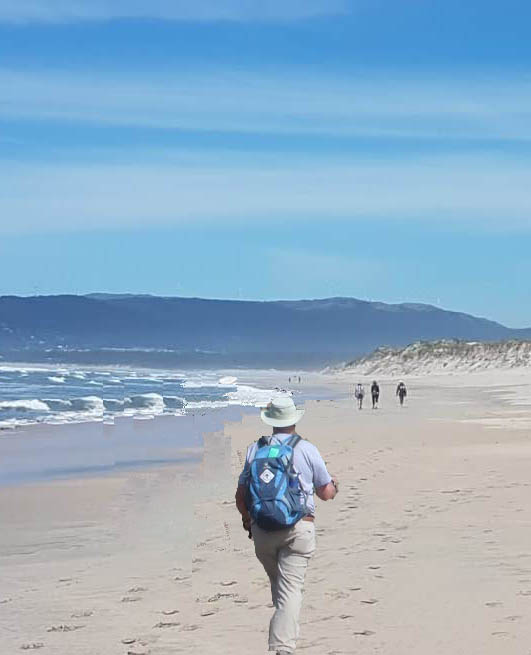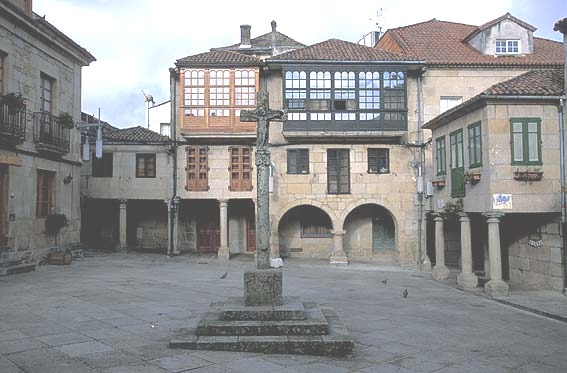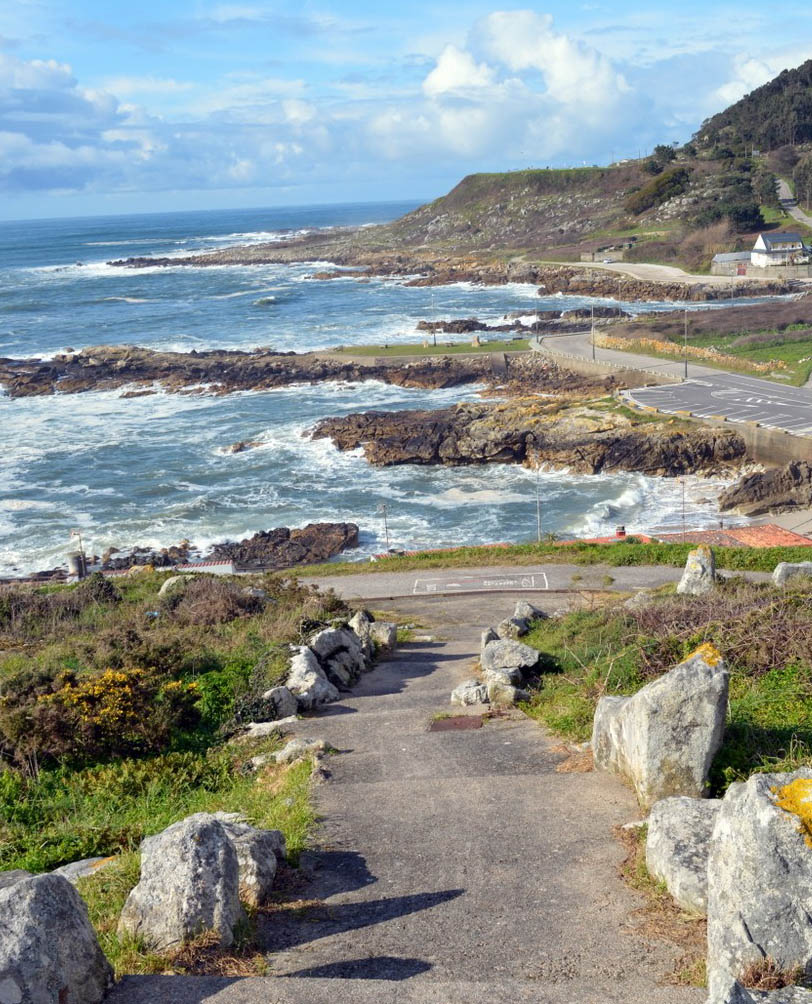WALKERS’
WORLD
Caminho de
Santiago (St James Way)
SELF-GUIDED
Portuguese
Coastal Route Itinerary
 |
 |
 |
Coastal Route Itinerary:
Day 1 - Porto
Arrive in Porto and check into a four-star hotel in the old
section. Porto is an interesting city to explore. Set on the banks of the
Douro River (River of Gold) and near the Atlantic Ocean, the city is best known
for its port wine that has been shipped around the world for centuries.
The riverside old quarter of Ribeira is delightful with its picturesque,
narrow streets. Fascinating sites include the Gothic church of St
Francis built in 1383. Its columns are lined with gilded woodwork,
cherubs, rose garlands and frenzied animals dripping with gold. Other
sites include the romantic "Street of Flowers" with its wrought-iron
balconies, as well as many port wine cellars offering tasting and the
house where Henry the Navigator (one of the great Portuguese explorers)
was born in 1394.
Day 2 - Porto to Vila
do Conde
This morning a
taxi will pick you up at the hotel and transfer you to the village of
Matsinhos (on the north side of the estuary) to start your Caminho walk. The route is the
Coastal Route heading north so the sea is always on your left.
Officially the Camino is on small roads that run parallel to the beach
but many pilgrims walk on the beach (keep in mind that walking in
sand can be tiring) In some areas there are boardwalks on the dunes
which make the walking easier.
Accommodation is in a pleasant hotel in the seaside town of Vila do Conde.21
km
Day 3 - Vila
do Conde to Esposende
More beaches, sea breezes and sand dunes but soon there is a choice. You can continue on the "Senda Litoral" which follows the
coastline or turn inland. While the coastline sounds
appealing, the route is not well-marked and sometimes blowing sand can
obscure markings and paths. The inland option is through a flat
market garden area where the path is well-marked. Approaching the town
of Esposende one crosses the Cavado River by bridge.
24 km
Day 4 - Esposende to Viana do Castelo
From Esposende to Viana do Castelo there are two routes. The "Senda
Litoral" follows the coast but should only be taken by very
experienced hikers who don't mind having to backtrack at times when
signs are obscured or rivers have no way of crossing.
Before entering the town of Viana do Castelo
there is an
estuary where, if the ferry is operating, you continue across but, if not,
it is necessary to walk inland 1 km to a bridge.
The main "Camino Costa" is inland on quiet country lanes interspersed
with stretches of woodland and river crossings in the hills.
On the other side
of the river you find Viana do Castelo which, during Portugal's golden age, was an
important and fabulously rich seaport where codfish from Newfoundland
and sugar from Brazil arrived. Medieval streets in the Old Town are
filled with cafes and shops selling traditional Portuguese pastries
which are always welcome after a long walk. 25 km
Day 5 - Viana do Castelo to Praia de Ancora
From
Viana do Castelo again there is a choice.
The "Senda Litoral" is almost entirely on beach paths and sand dunes
but exposed to wind and sun with little shelter. The alternative
"Main Route of the Camino Costa" offers varied terrain with
distant views of the coast. Much of this path is on paved country lanes.
19 KM
Day
6 - Praia de Ancora to A Guarda
Just past the village of Praia de Ancora the route heads inland.then returns to the coast and the town of Caminha.
Here there is a ferry across the Minho River (10 crossings
a day but none on Monday) into Spain. Remember
to change your watch when entering Spain. 14 km
Day 7 - A Guarda to Mougas
The route heads north along the coast through the town of Oia where
one finds the imposing Real Monasterio do Oia, a Cistercian monastery
dating back to 1185. From A Guarda to Oia is mostly on concrete but has
wonderful ocean views. 18 km
Day 8 -
Mougas to Baiona
Today is a short day which gives time to enjoy the lovely seaside
resort town of Baiona. For anyone looking for a rest day along the
way this would be a good place. If your budget allows, an
upgrade to stay in the spectacular Parador of Baiona makes this
overnight very special. 12 km
Day 9 -
Baiona to Vigo
Today there are choices of routes but we think the nicest is the "Senda
Litoral" along the coast. It is mostly level and ends by entering Vigo's
harbour area.
25 km
Day 10 Vigo to Redondela
The Coastal Camino now turns inland and joins the central inland
route at Redondela 16 km
Day 11 - Redondela to Pontavedra
This morning continue walking from Redondela. The trail passes through
eucalyptus forest and along the way pass a Roman milestone marking the
ancient Roman road Via XIX which linked the coast to inland towns in the
era of Roman occupation. Cross
the Rio de Vigo to Ponte Nova
and in the afternoon have a lovely rural walk to Pontevedra. This
is a lively Galician provincial capital with a delightful medieval area.
Accommodation is in a 3-star hotel in the central area (or an optional
upgrade to the Parador) 20 km
Day 12 - Pontevedra to Caldas de Reis
From Pontevedra walk on small country roads and tracks. There is a gentle
climb at San Mauro and from San Mauro continue to the spa town Caldas de
Reis "The Royal Spa" where pilgrims bathe their feet in a
fountain fed by natural warm spring water.
Caldas de Rei has been known since Celtic times for the thermal
waters which have gushed from its ground. Ancient
monuments remain here and in a thermal spring is an altar from the
pre-Roman age which is dedicated to the native god Edovio. Caldas
de Reis was a major spa for Romans and
has an abundance of Roman archaeological remains.
In Reconquista times it was known as Rex Calda and King Alphonso
VII was born here. Today it
is considered to be the garden and health resort of Galicia.
Day 13 – Caldas de Rei
to Padron.
The
route is on quiet country roads and natural pathways with a few gentle
climbs. The name Padron means
"mooring stone". Just up river is Iria Falvia which is the town
legend claims St James' body arrived in Spain two thousand years ago.
Under the altar in Padron's Santiago Church one can see what is said to be
the original mooring stone for St James' boat. The legend is
that St James preached the gospel in Iberia as well as in the Holy Land
and that after his martyrdom his disciples carried the body by sea to
Iberia where they landed at Padron and took it inland for burial.
Historians agree this is quite possible. Another St James legend says
that, decapitated in Jerusalem by Herod Agrippa himself, St James'
headless body was taken up by angels then sailed in a rudderless,
unattended boat to Iria Flavia where a massive rock closed around his
relics. Accommodation is in a lovely Pazo (a restored
traditional manor that was once the country estate of the Bishops of
Santiago) 19
km
Day 14 - Padron to Santiago
The final walk is along pretty country lanes passing through Iria Flavia
as well as other small villages and hamlets before arriving at the baroque
sanctuary of A Esclavitude. On a hilltop to the left stands the
mysterious, abandoned ruins of the hillfort Castro Lupario and a few
kilometres later we come to the oldest wayside cross in Galicia. As we
near Agro dos Monteiros it is now possible to see the towers of Santiago
Cathedral. Finally, the Camino passes by the ruins of a castle and enters
Santiago. It is tradition to head
for the Cathedral, hug the statue of St James, collect the Compostela
certificate then relax and celebrate. Accommodation
is in a four star hotel in Santiago's old quarter near the Cathedral. 23 km
Day 15 -
Depart.